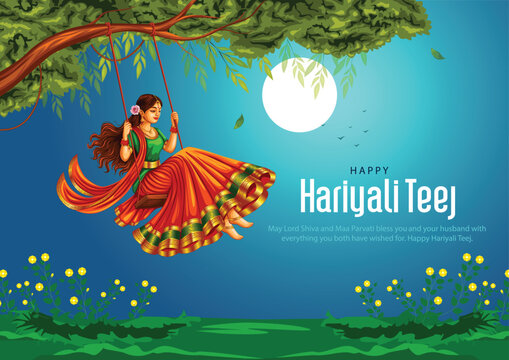The Beauty and Significance of Hartalika Teej Images

Introduction
Hartalika Teej is an important festival celebrated predominantly in Northern India, particularly in states such as Bihar, Uttar Pradesh, and Jharkhand. This festival holds great significance for married women, who observe it for the well-being and longevity of their husbands. Hartalika Teej is marked by a grand celebration of love, devotion, and togetherness. Images depicting this vibrant festival not only capture the essence of the occasion but also reflect the rich cultural heritage associated with it.
Celebrations and Traditions
The festival of Hartalika Teej usually falls in the month of Bhadrapada, during the third day of the waxing moon. Women fast throughout the day, adorned in traditional attire, primarily in shades of red and green, symbolizing love and prosperity. The Teej celebrations include singing, dancing, and praying while gathering with family and friends.
The rituals involve worshipping Goddess Parvati, as she is believed to have reunited with Lord Shiva on this day after years of penance. The vibrant images of this festival often showcase women adorned with bangles and mehndi (henna), participating in collective prayers, and the beautiful decorative swings (jhulas) that are part of the festivities.
Significance of Hartalika Teej Images
The images captured during Hartalika Teej not only showcase the festivity but also serve as a representation of the cultural ethos of the communities that celebrate this occasion. From elaborate decorations to joyful expressions of women, these images echo the feelings of devotion and the spirit of the festival.
Social media platforms have now become a popular medium for sharing Hartalika Teej images. The hashtags related to the festival have trended across platforms like Instagram and Facebook, where users share snapshots of their celebrations, traditional attire, and festive meals. This digital sharing allows for a wider appreciation and understanding of the cultural aspects of this festival beyond its geographical boundaries.
Conclusion
Hartalika Teej is not just a festival; it’s a celebration of love, devotion, and cultural heritage. The images captured during this vibrant occasion play a vital role in preserving and promoting the traditions associated with it. As the festival continues to evolve with the digital era, the rich imagery shared globally fosters a sense of community, bringing together people from different backgrounds to engage and appreciate the spirit of Hartalika Teej. Looking ahead, while the traditional practices are expected to continue, the way they are celebrated and shared is likely to embrace new-age influences, ensuring that the essence of the festival remains alive for generations to come.









